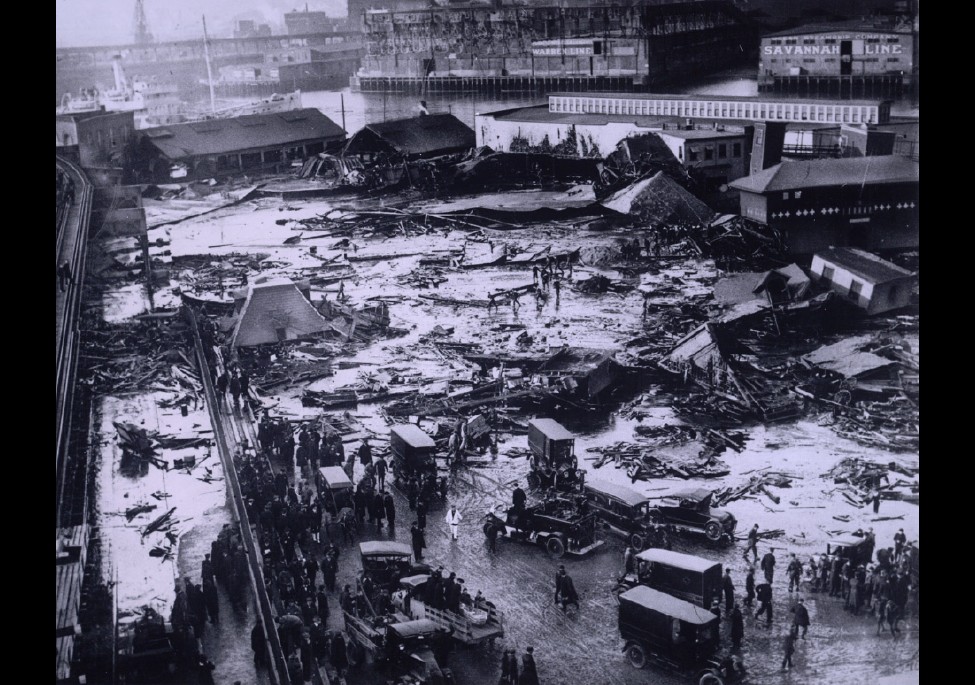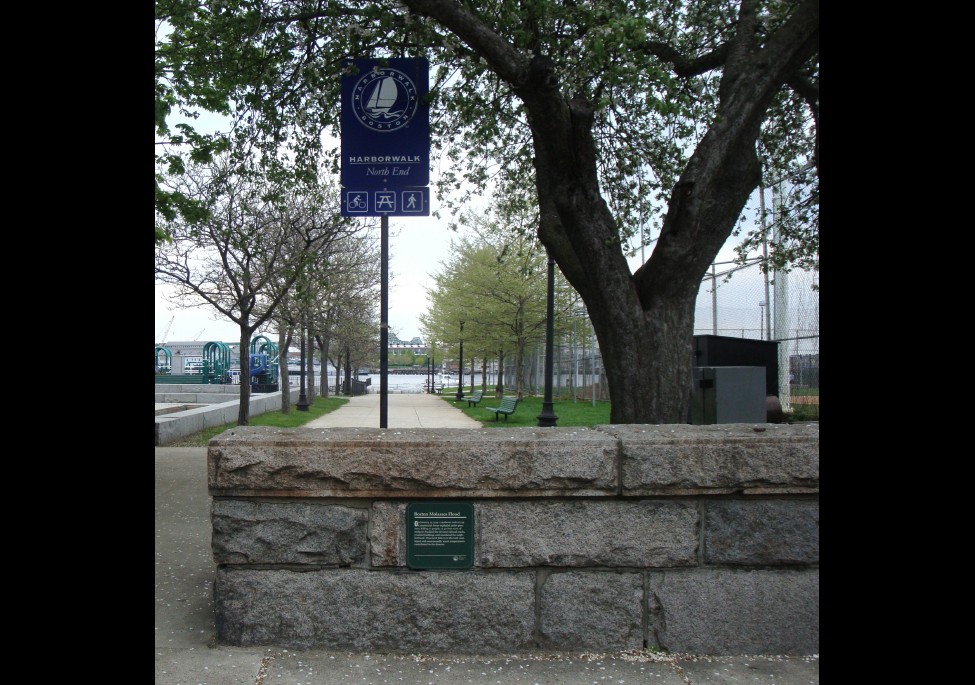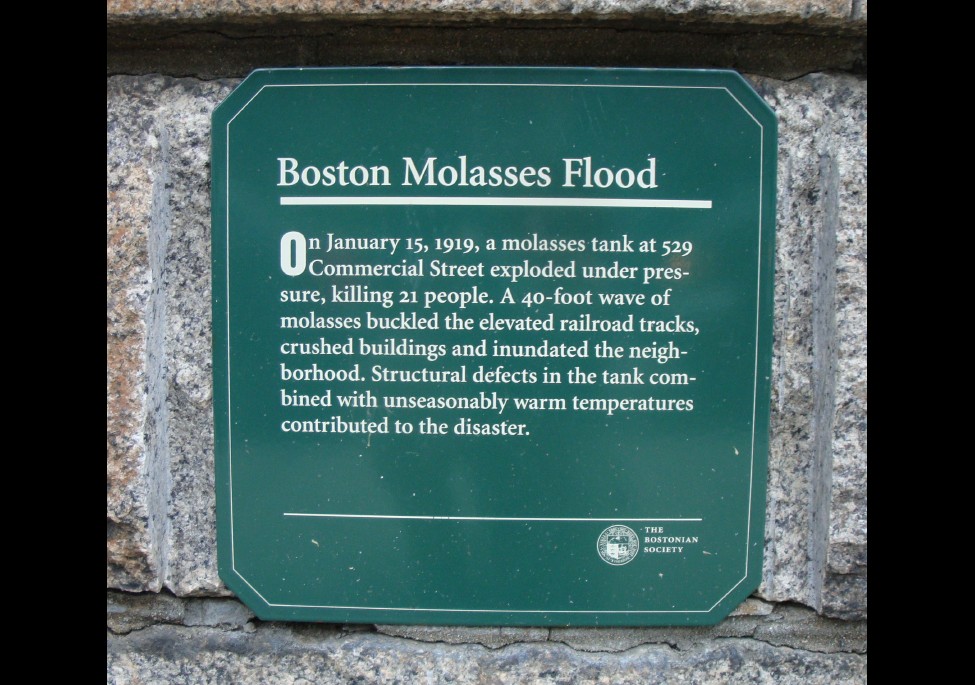
What) At the intersection of Foster and Commercial Street in Boston’s industrial North End, is a curious historical site. Marked by a small, easily missed plaque is the location of a moment in Boston history that is without a doubt one of the oddest disasters to ever happen anywhere.
At 12:45 in the afternoon on an unusually warm January 15th, 1919, Boston Police Patrolman Frank McManus shouted into his transmitter. He could barely believe the words that he was saying: “Send all available rescue vehicles and personnel immediately. There’s a wave of molasses coming down Commercial Street!”
A five-story-tall cylindrical metal tank, 90 feet in diameter, had burst. A two-story-tall wave containing 2.3 million gallons of molasses issued forth, traveling out in all directions like a shock-wave. The molasses spread across the city at an estimated 35 miles per hour. And it wasn’t just the sugary tidal wave that was so deadly. The tank ripped into sharp projectiles and shot metal bolts from its sides like bullets. As the wave and debris crashed down Commercial Street, buildings were smashed to bits. Some were picked up by their foundations and floated away in the tide of molasses. Electrical poles keeled over, exposing live wires. A steel elevated train support beam was torn to smithereens. Molasses covered everything. According to a Boston Post article, “Horses died like so many flies on sticky fly paper.” It wasn’t just horses. The great Boston molasses flood killed 21 humans as well.
Though the
disaster was blamed at first on Italian anarchists, it was in
fact the tank company’s fault. The tank, which stored the
molasses until it could be turned into industrial alcohol for
munitions, was not nearly strong enough. After many years of
litigation, the company was eventually found culpable and was
forced to pay a million dollar settlement. It took over 87,000
man-hours to remove the molasses from the surrounding streets
and houses, and the area was said to have remained sticky to
the touch and sweet to the smell for years afterwards. (1)
Where) the intersection of Foster and Commercial Street
Why) I
never really had any intention of visiting this site because I
dislike heavy traffic and my experience at the last Buckys only reinforced that
preference. I do find the story compelling though and I
thought it would make interesting reading as we drove through
the area. 
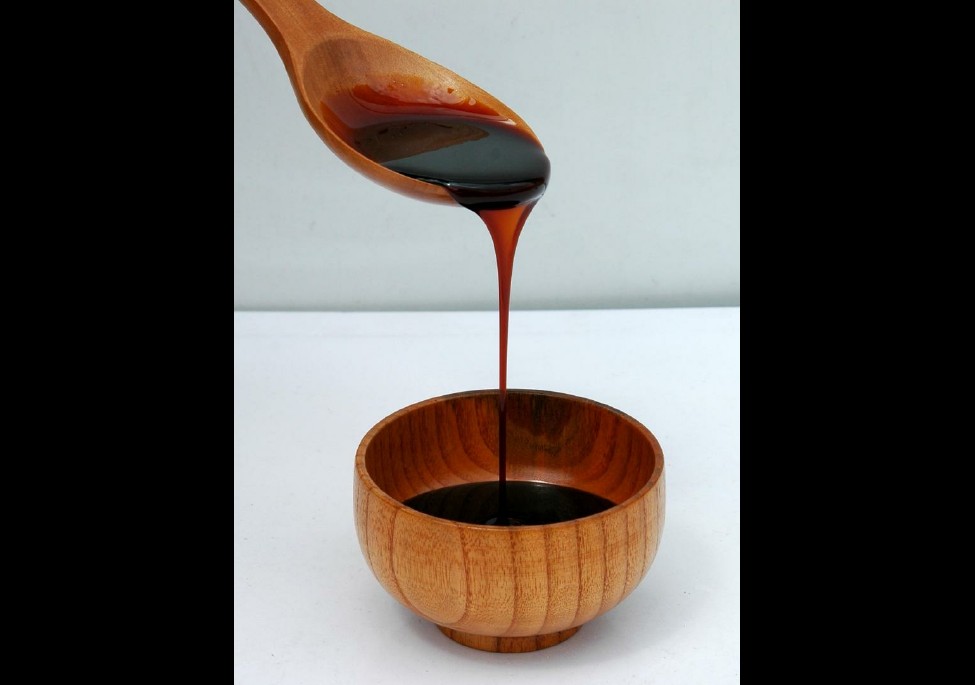
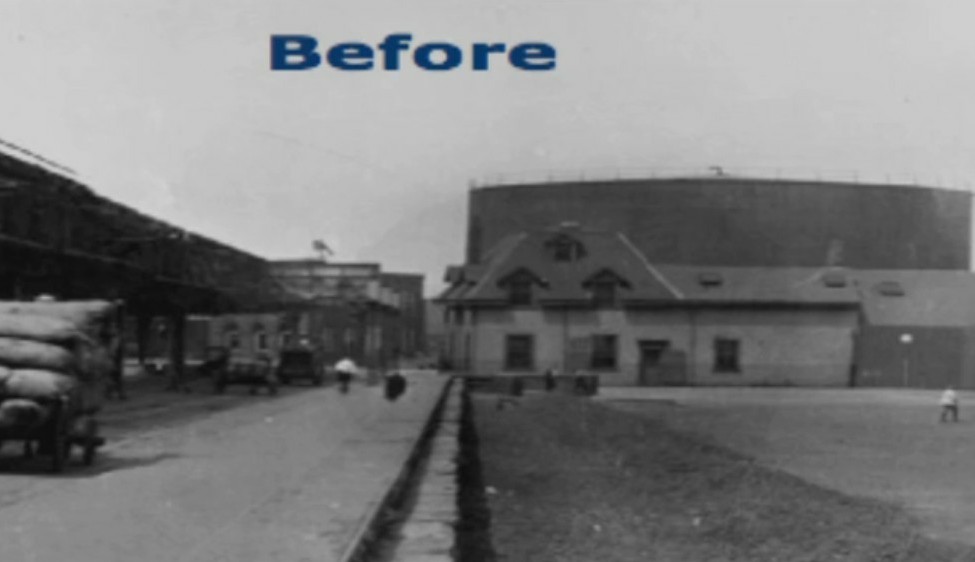
The actual Boston molasses tank was much bigger than that though. It is the structure with the guardrail on the right of this picture. (2)
